
CLICKOLDING was provided by Strange Scaffold for review. Thankyou!
This review was created using an LCD Steam Deck. OLED testing will be carried out at a later date.
CLICKOLDING might win the ‘Most Weird Game I have Played in 2024’ award. Strange Scaffold has some fantastic hits this year, including the excellent I Am Your Beast. CLICKOLDING is another intriguing experience, and despite its experimental nature, it left me feeling things I rarely do in a video game. While I like this game, I struggled with major performance problems that dragged the experience down.
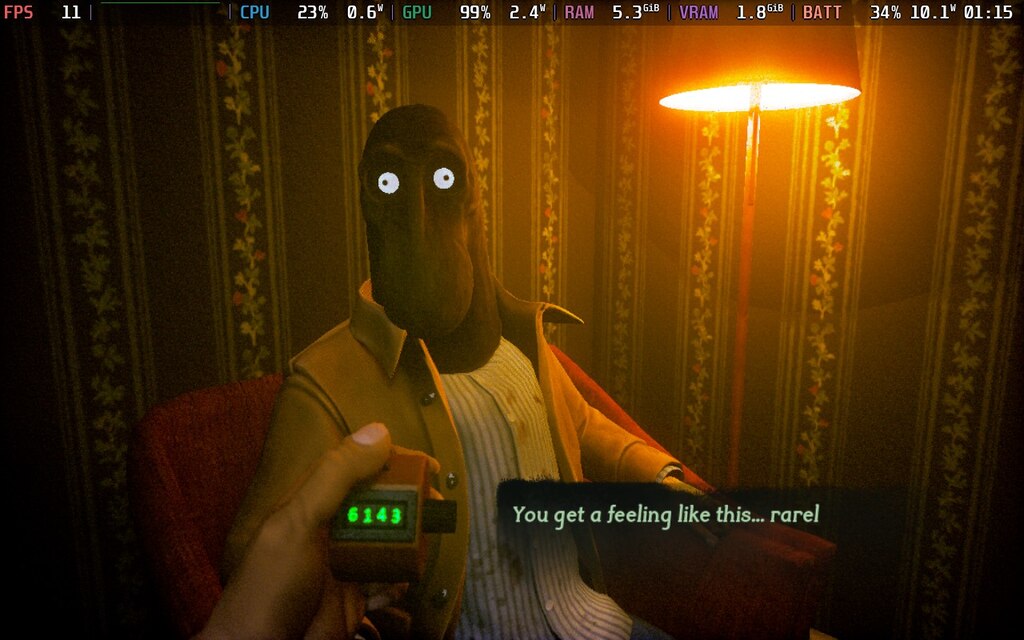
In CLICKOLDING, you are stuck in a dingy hotel room with a masked, creepy man with a mission to press a clicker 10,000 times. That’s the goal. If you succeed, you get paid. The premise is wacky, and sometimes, we do weird things for money, but if they want to earn by doing this for a mysterious masked man, who am I to judge?
Oh, and you cannot leave. If you decide this is too creepy to continue, you do not get paid by the hooded bloke. CLICKOLDING might be short, but it’s an intriguing endurance test. The atmosphere within the hotel room is unsettling, with little light and few distractions apart from your captor. The guy holding you captive is not my ideal drinking partner on a Friday night, and he gets increasingly demanding with how you click the button. Sometimes, he wants it to be slow. Sometimes, he wants you to click it fas. And yes, it is as creepy as it sounds!
The game mechanics and controls are pretty limited, as you might expect. You can move around the room a little bit, but the movement feels incredibly stiff, as if my character agreed to have his legs shackled as part of this bizarre gig. There are a few things to interact with, such as the television, the blinds, and the thermostat, but you’ll mainly be pressing the clicker.
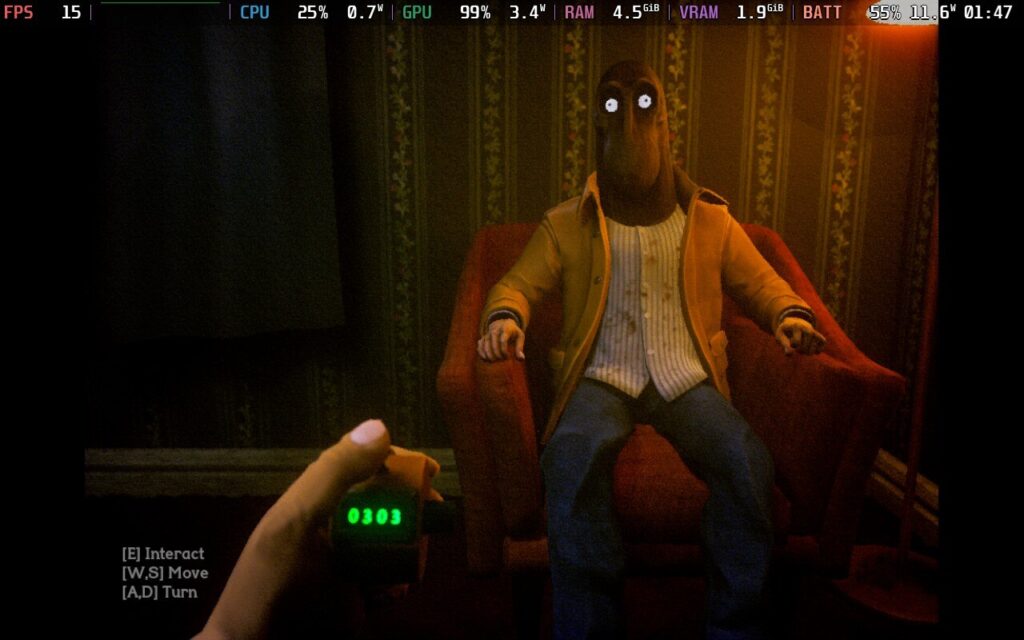
Thankfully, the controls allow you to hold down the clicker. Not being forced to click constantly is wonderful for my sanity, thumbs, and Steam Deck triggers! Our cheerful, mask-wearing buddy will order you to do things, including opening the blinds, adjusting the temperature, and even going into the bathroom to click because he is sick of your face. I dared to leave, but he yelled at me to return to the bathroom and listen to his rambles.
Perhaps the idea of endlessly clicking a button for over an hour is not your idea of a fun time, and I will agree with you. CLICKOLDING’s biggest strength lies in the immersion, which brought me in. It made me want to see what else the masked lunatic would say next, and you discover a lot about his life and his motivations while dancing to his whims.
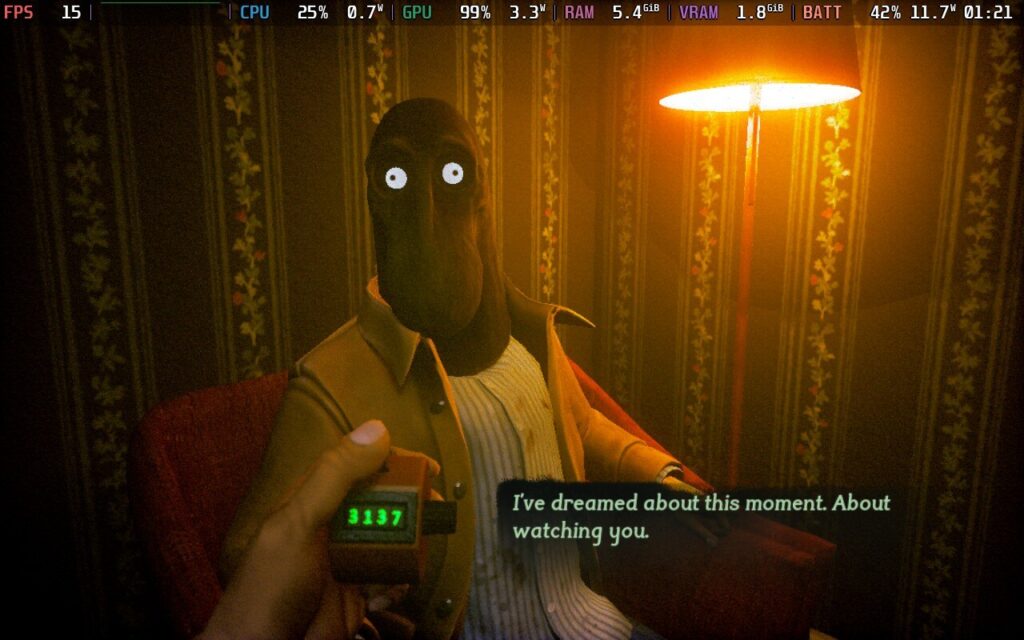
It made me think about why my character agreed to this in the first place. Was I strapped for cash? Maybe I needed the money for poor life choices. Perhaps a friend or family member is sick, and this was the ‘easiest’ way to get the money? Maybe I do not need the money at all, and it's just me feeding a kink. It’s a mark of good world-building when I am taking the time to create potential scenarios for my character’s motivations.
CLICKOLDING has a few settings options, and some unfortunate bugs hold it back. The movement is very stiff, and sometimes, I bug out when I try to move around the small room. This led to a humorous ten minutes of me trying to reach the window while my captor/employer barked the same command at me until the game let me move.
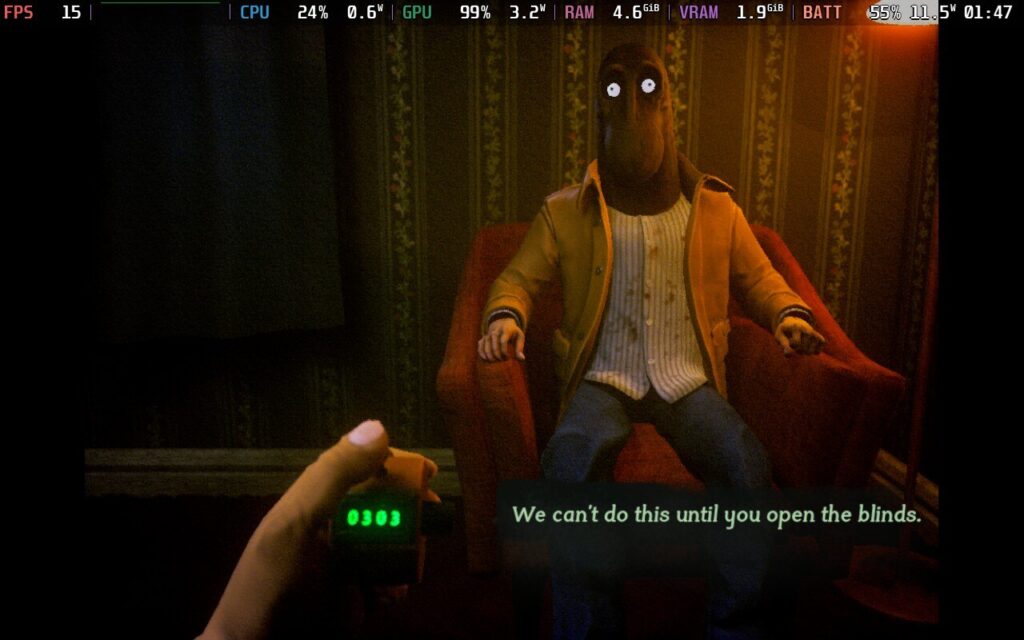
There is also no save feature. For a game that only lasts around an hour, this usually would not be much of a problem, but this system only works if things go without a hitch. Imagine my frustration when I was over halfway to the 10,000 target when the game froze. No matter what I tried, I couldn't move anything, although the sound still worked. After a few minutes, the game returned to the Steam Deck’s main menu. With no way to recover my save, I had no choice but to start a new game. I understand the lack of saving in such a short game, but the technical problems I’ve encountered highlight how problematic it can be. Something soft locked my progress whenever I tried to ‘complete’ the game. Sometimes, my character would not move during a task, and because the game halted your clicking until you did what the creepy man asked, I was forced to restart.
Unfortunately, my experience with CLICKOLDING ended on a sour note. I still appreciate what the game offers, and for 3 dollars, you get a chilling social experiment that asks many questions. Hopefully, the developers can fix these bugs.
CLICKOLDING is currently classed as ‘Unsupported’ on Steam Deck, as stated by Valve, and holds a Silver rating on ProtonDB. While the game is technically playable on the Steam Deck, it suffers from many problems. My testing was done with the LCD Steam Deck model.
First, the game will ask you to install a C++ library when you boot. If you have it already installed, it will usually just fail to load and kick you back to the Steam Deck menu. I fixed this by uninstalling the library when requested, and the game booted as normal. You can also use Proton GE to fix this issue.
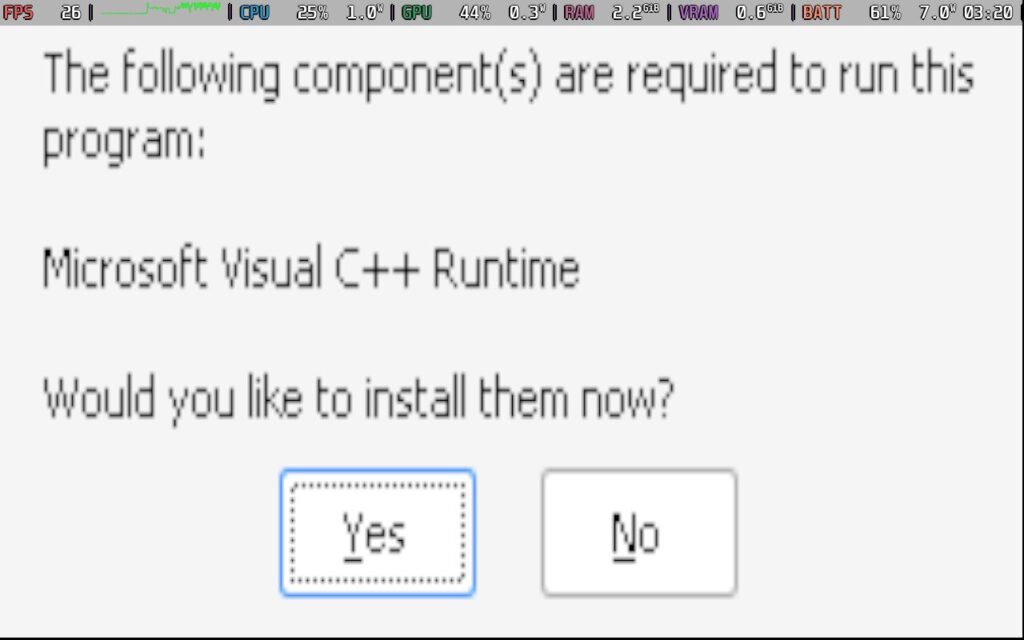
Unfortunately, CLICKOLDING is not optimized for the Steam Deck at all. Even on the unlocked TDP with no tweaks, I struggled to hit over 30FPS at any point, with the frame rate constantly shifting between 18 and 20FPS. This came with an extremely high power drain, averaging 17 watts with occasional spikes into the 20W range. This was disappointing, with the entire game in a single room. The default controller profile is the Keyboard WSAD and Mouse configuration, and apart from the movement bugs present in the game, I found this to be the only good configuration. Our options are limited, and we have no controller support or the ability to change settings or keybindings. Changing the screen resolution to Steam Deck’s FSR mode also did not affect performance.
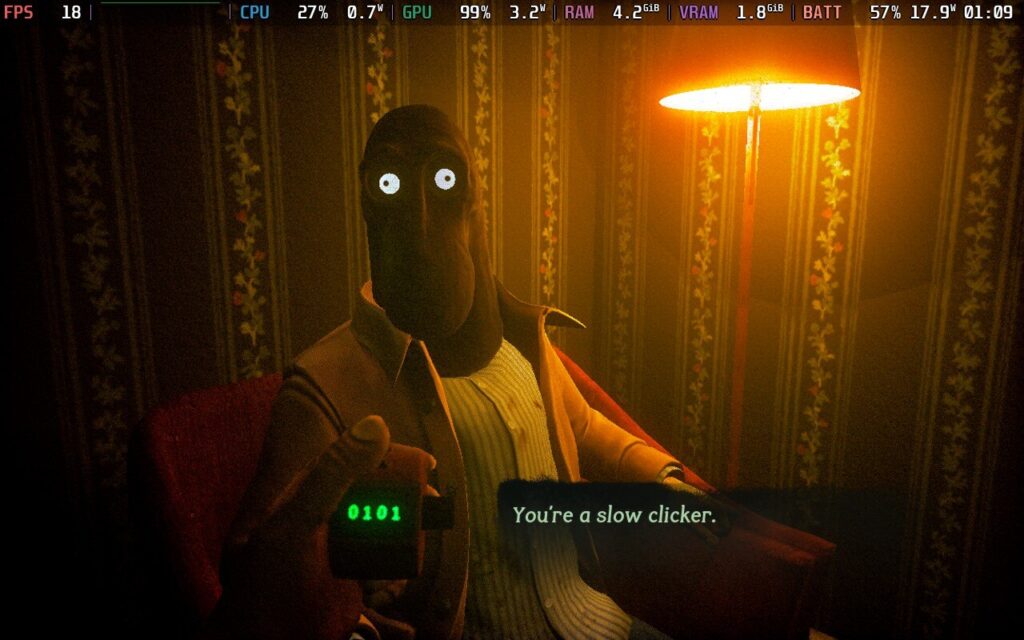
The LCD Steam Deck's battery life averaged 2 hours in this stock configuration. Changing the refresh rate to 40hz offered no performance or battery life gains. With the game's short length, there is no reason to use a configuration other than the stock settings, but for the sake of those like me who want to squeeze more battery life out of their devices while sacrificing performance, I am going to offer that, too.
With a 6W TDP lock, half-rate shader turned on, and the refresh rate set to 40hz, the average frame rate dropped to around 15 FPS. It's not what I could call playable for a normal experience, but the power draw was decreased significantly to an average of 11 watts. This greatly increased battery life to nearly double the stock settings, but the poor frame rate speaks for itself.
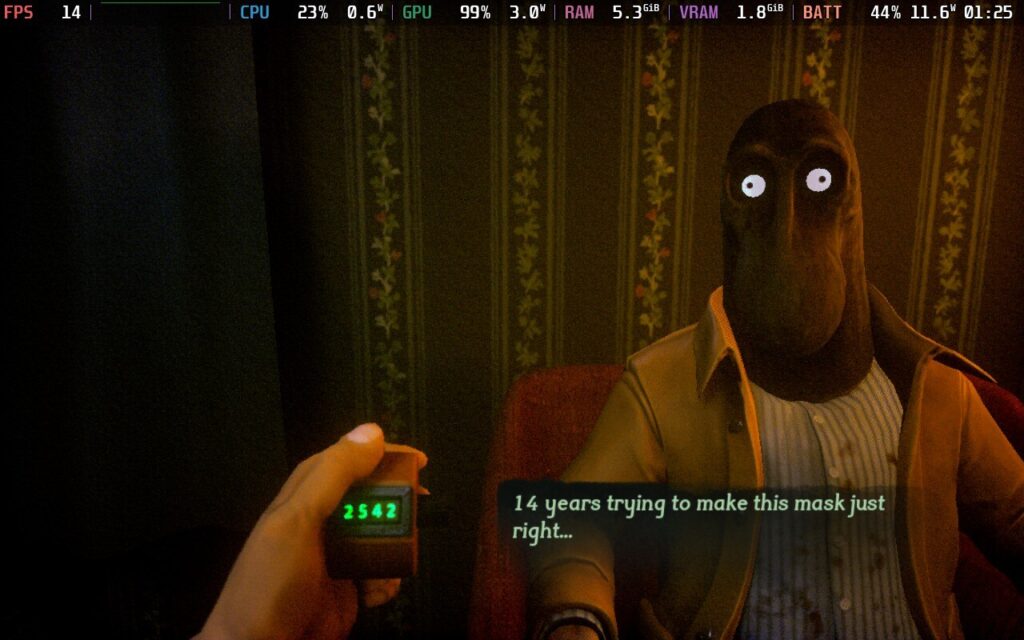
As accessibility settings go, CLICKOLDING is minimalist. Right now, it is only available in English.
You can change the volume and screen resolution, set a framerate cap, and use anti-aliasing. Those are the only variables you can change. There is no way to change key bindings, no controller support, and no colorblind support. There are also no Cloud saves.
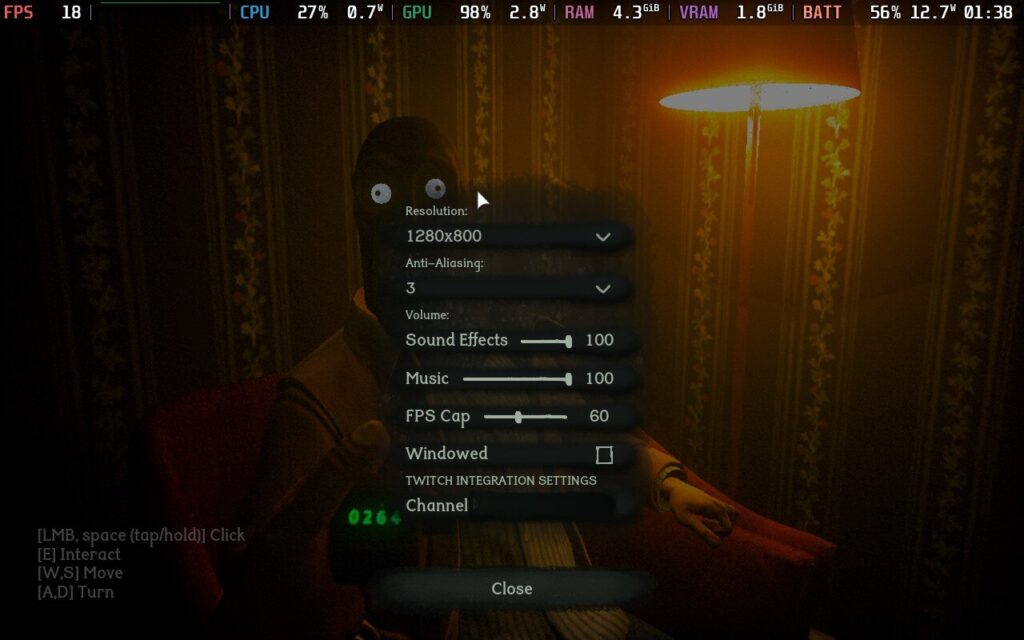
I came away from CLICKOLDING with mixed feelings. The atmosphere of the game excelled in keeping me unsettled, to the point I didn’t care how repetitive the clicking became. That is the whole point of CLICKOLDING, after all. For 3 US Dollars, it is hard to argue against trying the game at that price.
The technical problems I encountered left a sour taste in my mouth. While it is certainly playable on the Steam Deck, the lack of accessibility options and settings brings down the experience for me.
Our review is based on the PC version of this game.
If you enjoyed this review, be sure to check out the rest of the content on SteamDeckHQ! We have a wide variety of game reviews and news that are sure to help your gaming experience. Whether you're looking for news, tips and tutorials, game settings and reviews, or just want to stay up-to-date on the latest trends, we've got your back.
CLICKOLDING is a flawed, yet captivating experiment by Strange Scaffold. Its performance leaves a lot to be desired however, especially on the Steam Deck.